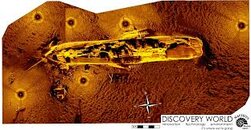Yeah, I had a friend who found a body off of the Oriskany. He spent about 3 hours towing his side scan around the wreck, found a couple of interesting looking contacts, jumped in, and found the body in about 15 minutes, he went to where the props should be, swam out 100 yards, and lo and behold, first contact.
It is very unlikely that anyone would put together a search with a gas other than 21/35 or even 20/20. The wreck is in 157 feet, and although you and I could dive it (and I have) on air, it just isn't the standard. Imagine the lawsuit when someone gets bent looking for a body for the county as a volunteer and helium wasn't provided. It just isn't prudent.
Agreed. This is the problem with taking on volunteer searchers for something like this: lawsuits. At this depth, any real (non sonar) search pattern is not going to be done on air.
IMO, the best chance to recover this person is by sidescan (as you described above), and I'd be looking hard in the water column, depending on how heavily he was weighted, exposure suit, etc. First and second float generate a lot of lift.







